Do you desperately want a higher score on the SAT Math test?
If so, you might think that the trick to a higher score lies hidden in secret strategies that only a professional SAT Tutor would know…
Or, it may be in reviewing old math content you’ve gotten rusty on and forgotten.
Perhaps you think your top priority should be to untangle the hardest SAT Math questions at the end of the test.
Or you believe that if you just could beat the time limit with confidence, then all your SAT Math problems would disappear overnight.
And all of those viewpoints contain an element of truth.
But speaking as a veteran SAT prep tutor and perfect-scorer, none of those methods compare to the one big problem that all students have on the SAT Math test.
This issue is the source of the fastest and most-straightforward score gains on the SAT Math test you could ever achieve.
See, you could master your Algebra & Geometry, learn the most powerful SAT Math strategies, finish the test with 20 minutes to spare, and attack the toughest questions without fear. And even if you did these things, you’d probably still be missing out on the single most important issue that’s hurting your SAT Math score.
And that issue is Careless Math Mistakes.
Let’s explore this issue through the eyes of an experienced tutor. We’ll start with the origins of careless mistakes, then explain the top 7 most common careless mistakes, and explore ways to prevent them and get a higher score.
First of all, where do careless math mistakes on the SAT come from?…
The Central Origins of Careless Mistakes on the SAT Math Test
Careless mistakes on the SAT Math test come from a cluster of related causes.
The first is lack of awareness. The easiest way to make a ton of careless mistakes is to not even be aware that you will make them.
The right mindset for SAT Math is what I call “a healthy paranoia” about your mistakes – which means you stay concerned about making careless mistakes, but not so much that you lose confidence in your math skills.
Yes, you will make careless mistakes – I guarantee it – but you also trust yourself to notice and fix them before they lose you any points. Stay aware that you can make careless mistakes on any problem, at any time.
The second source of mistakes is lack of focus.
Most SAT Math mistakes come from zoning out or losing concentration. The SAT Math test is incredibly long (almost 90 minutes) and it’s at the end of the test. It’s understandable that you’d feel fatigued and need a mental break at this point – the only problem is, you don’t get one.
It’s up to you to stay 100% focused on your work, no matter how tired you are. The test will be over sooner than you think, and trust me – you don’t want to have to take the entire SAT again just because you lost your focus in the final hour.
The third common origin of careless mistakes is rushing & time pressure.
If there’s one thing I’ve learned about life, it’s that when we rush things, we make mistakes.
Yes, I know you’re on a limited timer. I understand the urge to skip steps in an attempt to save time. I know that you’re worried about hearing the 5-minutes-left announcement.
But it doesn’t matter. If you give into the pressure, and you start rushing, the careless mistakes will come bubbling up immediately.
You have to move quickly, but also put the timer out of mind. You can’t use half your brain to worry about the time limit and the other half to do math. Commit 100% of your brain’s focus to the math problems themselves, and stop fixating on the clock. Move quickly, but never rush.
The final common source of careless mistakes on the SAT Math test is mental math and not showing your work.
I do not trust mental math. If you make a mistake in your head, you’ll never be able to find it again – and that means you can’t fix it. But if you make the same mistake in your written work, you can easily find it and correct it.
Show your work. Write out your algebra step-by-step. Underline, circle, and take written notes on the word problems. You do have the time to show your work on the SAT.
Don’t try to “save time” by doing mental math – you’ll lose more points than you gain. I promise.
Now that you know the main sources of careless mistakes, let’s talk about the seven most common careless mistakes you’ll make on the SAT Math test…
The 7 Most Common Careless Mistakes on the SAT Math Test
What’s fascinating to me is that every student commits the same careless mistakes on the SAT Math test. As a tutor, it’s almost spooky how predictable these mistakes are.
From the slowest and least-confident students to the fastest and most confident of test-takers, these same seven math mistakes are the source of more lost points on the SAT Math test than any other topics or issues.
Here are the top seven SAT Math mistakes, listed in order of priority:
- Negative Signs and Subtraction
- Misreading or Incomplete Reading of the Question
- Distributing, Parentheses, and Order of Operations
- “The Switcheroo”
- Fractions
- Basic Algebra
- Exponent Rules
Now let’s explore each of these mistakes in turn, and some ways to prevent each of them.
SAT Math Mistake #1 – Negative Signs and Subtraction
Let’s start our exploration of common SAT Math mistakes with the most dangerous symbol on the entire SAT Math test: the negative sign.
The number-one source of mistakes on the SAT Test is nothing more than the humble negative sign, along with any other step that involves subtraction.

I joke with my SAT Group Classes that I’m guaranteed to make a negative-sign mistake at some point during the lesson – and I’m usually right. It’s a race to see who can spot the error first – me, or my students.
Most often, these mistakes happen when I’m trying to rush, or to do two things at the same time (for example, trying to explain my work out loud even as I’m doing it).
That’s an important lesson – when we rush, we make negative sign mistakes. And when we’re not 100% focused on each step of math, we also make the same mistakes. Focus. Don’t rush.
Negative signs are an easy mistake to fix, but they’re just so common. In fact, sometimes I consider replacing myself with a simple audio recording that just says “Have you checked your negative signs? Are you sure? Are you really sure about that?”and then loops on repeat.
I’m pretty sure that with this one audio recording I could replace half of what I do in my SAT math tutoring lessons. I could just lean back, press “play” and let students solve their own math mistakes by double-checking their negative signs. It’s not hard to fix them, once you’re actively looking for them.
Always anticipate the negative-signs mistake. Notice the signals: any questions or steps that involve negative signs or subtraction (and you’ll soon realize that this includes the majority of SAT Math questions).
You can never, ever sleep on negative signs and subtraction, or take them for granted. Never. Let me restate a key point: I have perfect SAT math scores, 10 years of teaching experience, and yet I still make this mistake almost every day.
It’s hard to completely prevent this mistake, but it’s so easy to fix when it happens. Just remember at all times how dangerous the humble negative sign is, and triple-check your work for your negative signs and subtraction. Any time something feels “off” in your SAT Math work, start by double-checking your negative signs and subtraction.
Honestly, I recommend that you just assume you’ll make negative sign mistakes on test day. Then you’re constantly on the lookout for them before they even happen.
SAT Math Mistake #2 – Misreading or Incomplete Reading
We’ve all seen them – the incredibly-long, complicated-looking word problems that show up on the SAT Math section.
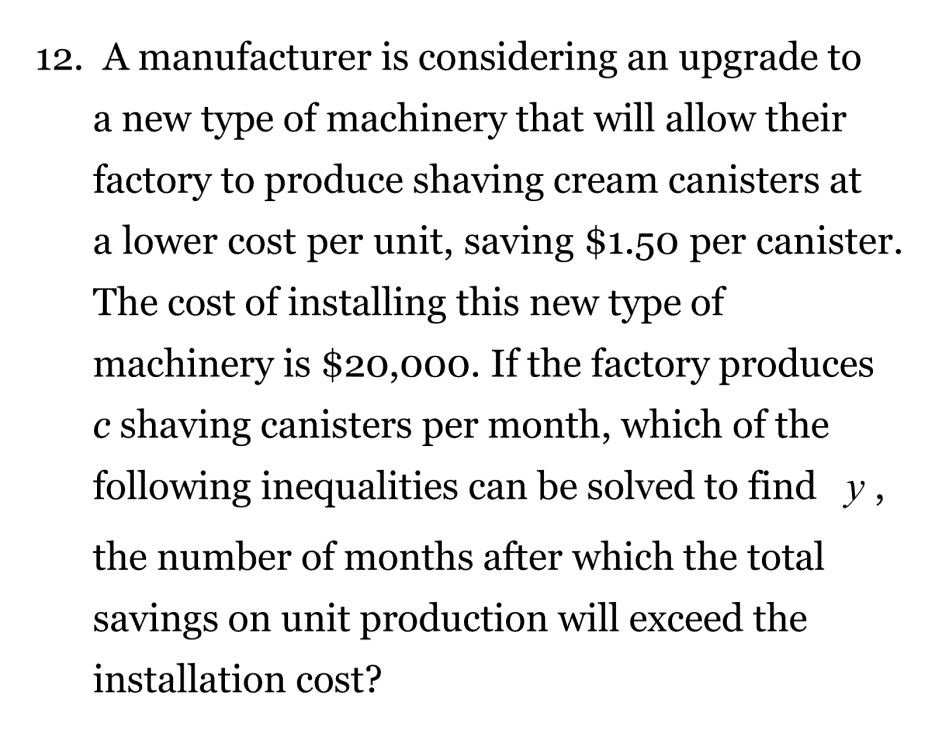
And if you’re intimidated by these questions, you’re right to feel nervous – but probably for the wrong reasons.
See, most students are annoyed by how long the word question looks. But the truth is, most of that information is pretty useless. It’s probably some backstory about a factory making widgets, or a student throwing a party for Juniors and Seniors, or the number of dolphins in the ocean. Who cares?
Math doesn’t care about the backstory in the word problem. Math is just math, and most of those words are simply a fancy-looking decoration for the underlying math work that you need to do.
Your only job is to translate those words into a math setup as quickly and accurately as possible. Once you’ve converted the words into math, then you can forget about the words and just do the math.
Algebra doesn’t care whether you’re working with widgets, students, or dolphins. An “x” is just an “x,” regardless of what it represents in the real world.
Now, some students (usually confident or rushing students) will overlook details in the word problem. By failing to notice key information, they will feel “stuck” and unable to finish their setup. This is “incomplete reading.”
Other students (usually slower or more careful students) will misread details in the word problem. In this case, they seem to be hyper-focused on every detail of the question, overwhelming their brain with an excess of information. Paradoxically, their hyper-focus on every detail leads them to jumble up the important details.
So, we’ve got one type of question – long word problems – with two types of mistakes made by two different types of students.
Identify which type of student you are. If you’re a rusher, slow down and circle or underline all the key details. If you’re a slower student, try to save time by discarding useless backstory or any information that doesn’t directly help you set up the math.
There’s one truth for every type of student, though – in a long word problem, you cannot lose sight of what final value you’re solving for.
I recommend that your first step be reducing the word problem into a few key notes about the most important values or issues that you need to keep track of. I call this strategy “turn their words into your words, then turn your words into math.”
If you have to make up your own variables, keep clear notes. For example, “x = number of Juniors and y = number of Seniors.” Do this at the very beginning of the problem so you don’t have to backtrack later.
Be careful around long word problems on the SAT, but don’t get intimidated. Copy down the key info and disregard useless info. Set up the math, then disregard the words and solve the math itself. Before moving on, confirm with the word problem that you’re giving the correct final value to answer their actual question. The real question you’re answering is usually found in the last sentence of the word problem.
SAT Math Mistake #3 – Distributing, Parentheses, and Order of Operations
The next common careless math mistake is Distributing, Parentheses, and any step that involves following the Order of Operations.
You may know this as “PEMDAS,” which gives the correct sequence to follow for math operations in the following order:
- Parentheses
- Exponents
- Multiplication
- Division
- Addition
- Subtraction
If you complete these steps out of order, you will get the wrong final answer.
This is especially dangerous when negative signs are also involved, creating a nightmare super-mistake-monster from two of the most common careless mistakes. Check out the example below for a situation that makes me bite my fingernails with nervousness as I watch my students work…
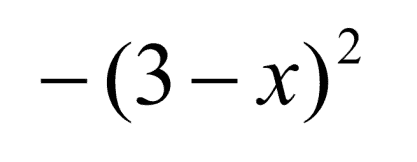
Another important note is that your calculator will always follow Order of Operations correctly – even if that’s not what you meant for it to do.
This isn’t the time for a full lesson on using your calculator correctly, but just a reminder that what you think you’re entering into your calculator may not be the same as what the calculator thinks you’re telling it – usually because you’re forgetting about Order of Operations.
You can minimize this mistake by remaining aware and recognizing any steps that must follow PEMDAS. Obey the Order of Operations carefully and religiously.
And only use your calculator with full awareness of what you’re telling it to do. It’s often safer just to work the problem by hand!
SAT Math Mistake #4 – “The Switcheroo”
Now this – “the Switcheroo” – is one of my all-time favorite math mistakes of standardized testing and the SAT test in particular.
Here’s how it works. The SAT sets you up to solve for a certain value – let’s say “width” of a rectangle. You work the problem confidently, you find that the width is 5 units, and then, glowing as if the sun is shining down on it, you see answer choice A is “5”.
You circle “A” and move on, feeling confident and powerful.
And then you find out later that you got the question wrong.
You know what your mistake was? It wasn’t your math. The width of the rectangle was, in fact, 5 units. You were right about that.
The problem was that the question asked you for the length of the rectangle. And you fell for the Switcheroo when you answered for the width.
The SAT loves to do this in their math test. They deliberately set up the math problem so that most students will naturally solve for “x”. Then they ask for the value of “y” or even of “3x.”
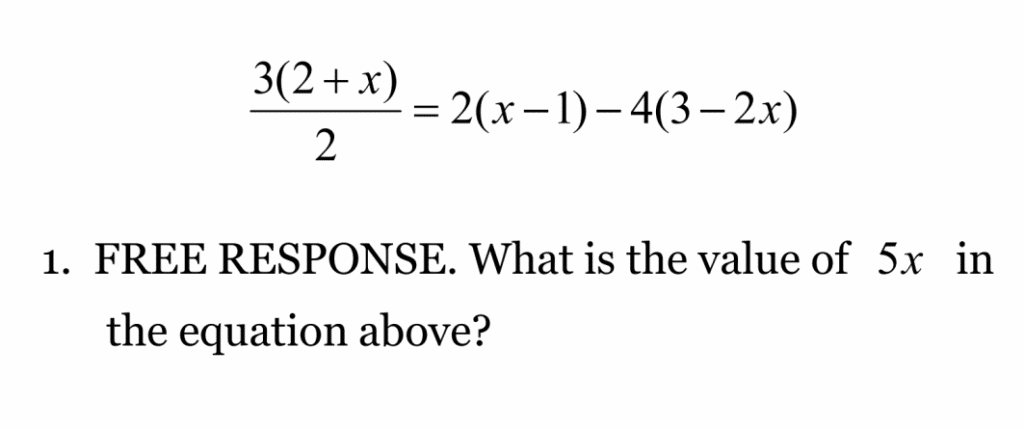
But, they’re very clever about it. For this mistake, the test-writers usually put the Switcheroo answer as Choice A, so that it’s the first thing you see. Then down at the bottom of the options – let’s say Choice D – is the correct answer to their final question.
Most students never look beyond Choice A once it matches their initial solution, and they never re-read the question to make sure they’re actually answering with the correct value for the final question.
The Switcheroo is especially painful because you actually did all the math correctly, and were only one step away from getting the points you deserve.
The counter-play is to anticipate and actively look for this trick on every SAT Math question. Never assume you have the final answer until you re-read the question one last time.
Watch out for multi-variable problems with both lengths and widths, or both x and y, or other similar situations.
But they can even pull this trap on single-variable problems. For example, you might solve for the radius of a circle, and they ask for the diameter as the final question. You could solve for b and they ask for “5b”.
Never go on autopilot. Never trust the question to be your friend. Always assume the SAT is trying to pull a Switcheroo on you.
SAT Math Mistake #5 – Fractions
Fractions are another huge source of careless mistakes on the SAT Math test.

The most common mistakes here come from confusion or carelessness about the rules of adding, subtracting, multiplying, and dividing fractions.
Surprisingly, the easiest thing to do with fractions is to multiply them – because we just use “top times top and bottom times bottom” to multiply two fractions. Easy!
Division of fractions isn’t much harder – you just have to remember to flip the dividing fraction, then multiply with “top times top and bottom times bottom.”
The real problems come when adding or subtracting two fractions. In this case, we must get a “common denominator” before we can add or subtract them. (Remember, the “denominator” is the bottom of the fraction.)
Once you have a common denominator, we just use “top plus top” or “top minus top”. We don’t do any addition or subtraction with the denominators (bottoms) of the two fractions – only the tops.
So, to prevent mistakes in your fractions you must be very clear about which rules you’re using. You must confidently understand the differences between adding or subtracting two fractions vs. multiplying or dividing them.
SAT Math Mistake #6 – Basic Algebra
The SAT Math test is nearly 85% based on Algebra 1 and Algebra 2. That’s not a figure I made up – it’s what I learned after weeks of careful independent research.
That extraordinarily high frequency is probably why I spend so much of my time as an SAT tutor correcting small mistakes in my students’ basic Algebra work.
This is a broad topic (fitting for a math discipline that students often spent 2+ years studying in high school). And there’s no way I could possibly explore every possible Algebra mistake in this article.
Instead, I’ll leave you with the most important way to prevent Basic Algebra mistakes:
Just show your work. Every time, every step, every question. Show your work.
Stop trusting mental math. Never do more than one step at a time. Write down every step.
When you do an operation to one side of the equation, write it down. Then copy that same step to the other side of the equation to keep things balanced. And then write the resulting line below. Rinse and repeat.
Keep your algebra work neat in clear, vertical columns. Plan ahead and leave space on the paper for your work. We have limited space to work each question on the SAT Math test – be sure to take this into account from the beginning of each algebra problem.
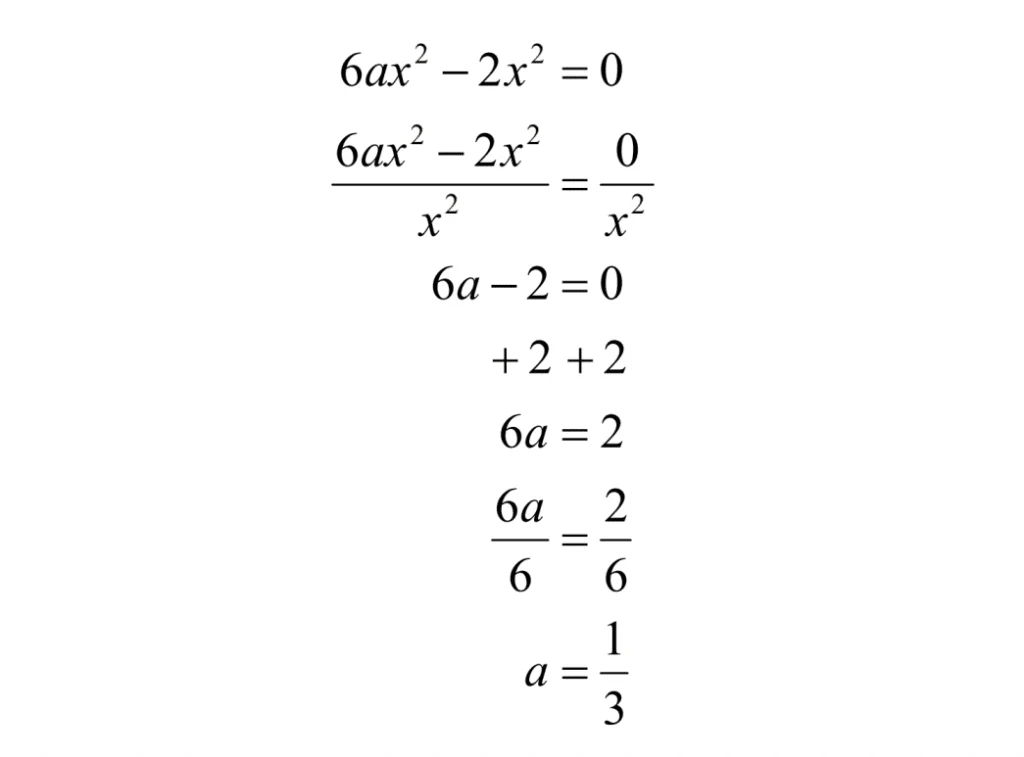
When you write each of your steps neatly and clearly, with no mental math, then you not only reduce your careless algebra mistakes, you also set yourself up to quickly and easily correct them when you do make them – and you will! But now you can find and fix your mistakes before they cost you any points on the SAT.
Don’t rush your work. Saving a few seconds here and there simply isn’t worth the risk of getting a problem wrong because you bungled an easy and familiar step of algebra, and left yourself without a way to identify and correct that mistake.
If you think you’re safe because you’ve got great grades in math class or because you enjoy algebra, then just trust me – you’re not immune. No one is.
I love algebra and I’m very good at it. Yet I will start making careless mistakes as soon as I try to do work in my head and skip writing down my steps. It’s the same for all my students – no exceptions.
SAT Math Mistake #7 – Exponent Rules
Confusion over the rules of exponents is another source of common mistakes on SAT Math tests.
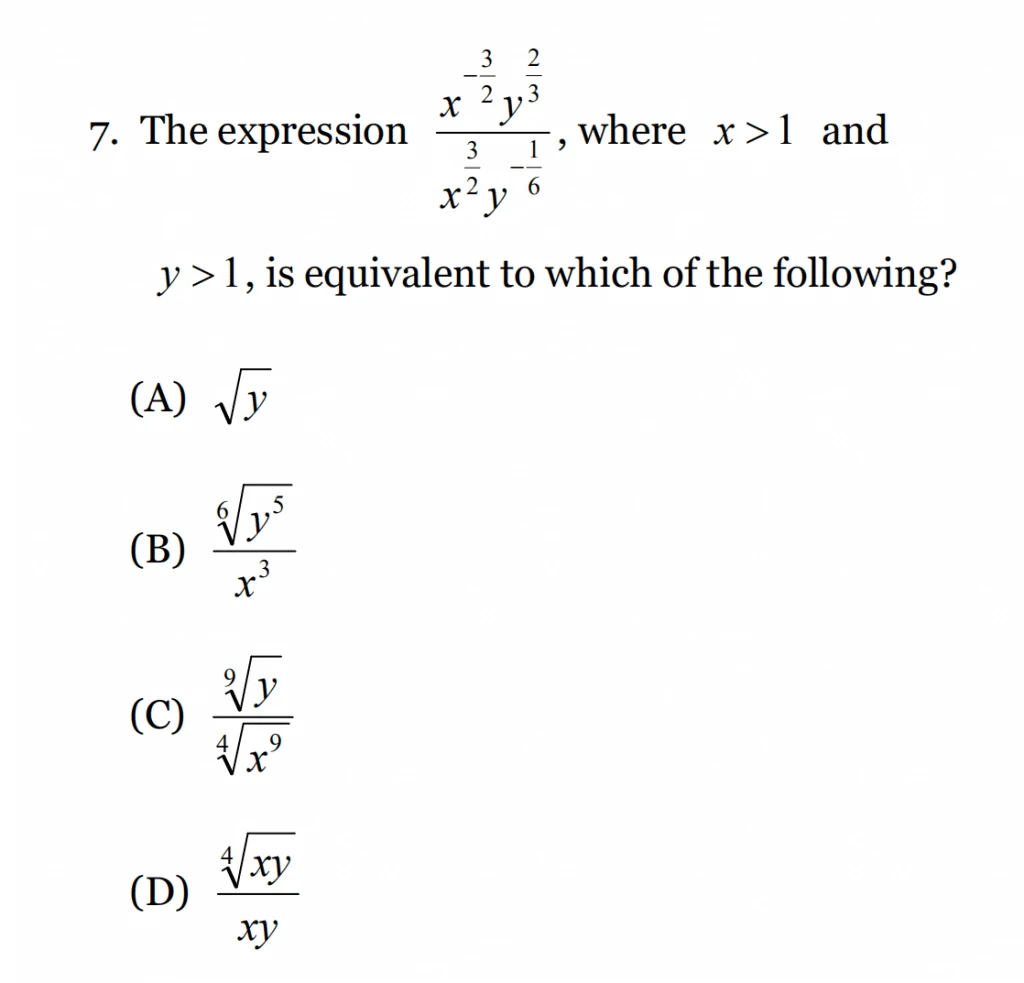
The SAT frequently tests exponents – you know they’re going to be on your next test. The only question is: are you prepared?
I don’t have space here to do a complete lesson on exponents – but remember that they follow clear and specific rules.
Exponents are actually quite simple and friendly, but many students get nervous and lose their confidence around these little numbers. Or you may never have felt confident on them in the first place!
You need to confidently know your exponent rules or you’re guaranteed to lose points on test day. A good SAT tutor can walk you through everything you need to know about exponents in 30 minutes or less.
Can You Prevent All Mistakes in Your SAT Math Test?
At this point I’d like to make a point about life in general – and that’s the simple fact that you can’t prevent 100% of your mistakes.

Mistakes happen. That’s life. Imagine spilling your drink one day and vowing to yourself “I’ll never spill my drink again for as long as I live.” An unlikely promise, eh?
Chances are, at some point, the same mistake will happen again. That’s the thing with mistakes – it’s not like we do them on purpose. They are accidents, and accidents happen.
This naturally extends to SAT Math mistakes. You can promise yourself never to make another mistake, but I guarantee you that they will happen anyway.
Despite our best efforts to be perfect, mistakes are a natural part of life. Instead of trying to prevent 100% of mistakes, we should seek to minimize them and prepare for them – and clean them up quickly when they inevitably happen in the future.
Don’t focus on being perfect – just focus on improving. That’s all you need to do. It will be enough – I promise.
Careless SAT Math Mistakes: Review & Conclusions
So now you know the top seven careless mistakes on the SAT Math test, the sources of all careless mistakes, the reason you can never prevent all of them, and an arsenal of tricks to reduce or fix them in the future.
Now, I’ll be honest – when it comes to preventing careless mistakes, it’s easier said than done. I’ve been teaching the SAT for 10 years, and I still make many of these mistakes on a daily basis.
The only difference between me and my students is that I’m completely focused, aware, and paranoid about making them. I notice the signs and signals. I catch myself and slow down when I’m rushing or not writing out my steps. I watch my negative signs like a hawk.
A perfect-scorer will catch these mistakes before they get away. We anticipate them, expect them, and actively look for them.
And we forgive ourselves for making them. I let my mistake sting for a second, to help me remember in the future. And then I laugh it off, correct it, and move forward.
That’s all it takes. You can fix this problem with about a week of good, focused practice. You’ll still make careless mistakes from time to time, but you’ll also notice and fix them before they cost you points.
And your SAT Math scores (and your confidence) will skyrocket as a result.
Onwards and upwards!
This was contributed by Christian Heath, founder of Love the SAT Test Prep and perfect-scorer on the SAT. He is a ten-year veteran of SAT prep with over 1,500 previous students and he is the author of a collection of SAT & ACT Prep textbooks.
- Heath, Christian (Author)
- English (Publication Language)
- 481 Pages - 04/09/2020 (Publication Date) - Love the SAT Academic Press (Publisher)
Last update: 2024-04-27
- Heath, Christian (Author)
- English (Publication Language)
- 544 Pages - 04/09/2020 (Publication Date) - Love the SAT Academic Press (Publisher)
Last update: 2024-04-28
Looking for more resources to prepare yourself for the SAT? Read our 125 tips to tackle the exam here or figure out which calculator to get for the SAT here.




